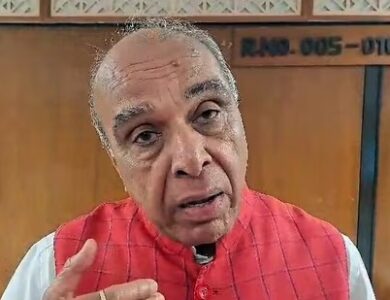
The recent landslides in Wayanad, Kerala, have caused widespread devastation, prompting Congress leader Rahul Gandhi to call for the area to be tagged as a national disaster zone. The region, known for its lush greenery and serene landscapes, has been battered by heavy rainfall, leading to landslides that have claimed lives, destroyed homes, and disrupted the lives of countless residents. Rahul Gandhi, who represents Wayanad in the Lok Sabha, has been vocal in his demands for immediate and substantial action from the central government.
1. Wayanad’s Struggle Amidst Unprecedented Rainfall
The picturesque district of Wayanad, nestled in the Western Ghats, is no stranger to monsoons. However, the recent downpours have been unprecedented, with rainfall exceeding normal levels by a significant margin. The continuous heavy rain has triggered a series of landslides across the district, leading to the loss of life and property. The situation is dire, with many villages cut off from the rest of the state due to blocked roads and damaged infrastructure.
Rahul Gandhi has been closely monitoring the situation in Wayanad, expressing his concern for the residents who are grappling with the aftermath of the disaster. He has visited the affected areas, met with the families of the victims, and assured them of his support in these trying times. The Congress leader has also urged the state and central governments to act swiftly to provide relief and rehabilitation to the people of Wayanad.
2. Rahul Gandhi’s Appeal for National Disaster Tag
In light of the severe impact of the landslides in Wayanad, Rahul Gandhi has called for the area to be declared a national disaster zone. This designation, he argues, would ensure that the district receives the necessary resources and attention from the central government to effectively manage the crisis and rebuild the affected areas.
The Congress leader has highlighted the need for a coordinated response from both the state and central governments, emphasizing that Wayanad’s unique geography and ecology make it particularly vulnerable to such natural disasters. By tagging the landslides as a national disaster, Rahul Gandhi believes that the district will receive the level of support required to address the immediate needs of the residents and to undertake long-term rehabilitation efforts.
Rahul Gandhi‘s appeal has been echoed by local leaders and residents who are witnessing the destruction firsthand. They hope that this move will not only bring in more resources but also speed up the response time, ensuring that relief reaches the affected areas without delay.
3. Government Response and Relief Measures
In response to the situation in Wayanad, the Kerala state government has initiated several relief measures, including the establishment of relief camps for displaced residents and the deployment of disaster management teams to the affected areas. The state government has also sought assistance from the central government to enhance their relief efforts.
Rahul Gandhi has been in constant communication with state officials, urging them to prioritize the safety and well-being of the residents. He has also called on the central government to provide financial aid to the state, ensuring that the resources needed for rescue operations, medical care, and infrastructure repair are made available immediately.
The central government, meanwhile, has sent a team to assess the situation in Wayanad and determine the extent of the damage. This assessment will play a crucial role in deciding the level of assistance that the district will receive. Rahul Gandhi has stressed the importance of a swift and comprehensive response, warning that any delay could exacerbate the already dire situation in Wayanad.
4. Long-Term Solutions and Future Preparedness
As Wayanad continues to reel from the impact of the landslides, Rahul Gandhi has also called for a focus on long-term solutions to prevent such disasters in the future. He has pointed out that Wayanad, like many other regions in the Western Ghats, is highly susceptible to landslides and other natural calamities due to its hilly terrain and heavy rainfall.
To address this, Rahul Gandhi has proposed the implementation of more robust disaster management strategies, including the construction of better drainage systems, afforestation projects, and the regulation of construction activities in vulnerable areas. He has also emphasized the need for early warning systems and increased community awareness to ensure that residents are better prepared to deal with such situations in the future.
Rahul Gandhi believes that by taking these proactive measures, Wayanad can not only recover from the current disaster but also build resilience against future calamities. He has assured the people of Wayanad that he will continue to advocate for their needs and push for the necessary reforms to ensure their safety and well-being.
Conclusion
The landslides in Wayanad have brought the district to its knees, leaving a trail of destruction in their wake. As the people of Wayanad struggle to rebuild their lives, Rahul Gandhi‘s call to tag the area as a national disaster zone highlights the severity of the situation and the urgent need for comprehensive relief and rehabilitation efforts. His advocacy for long-term solutions also underscores the importance of preparing for future disasters in this vulnerable region.
The response from both the state and central governments will be crucial in determining how quickly Wayanad can recover and whether it can be better protected against such calamities in the future. For now, the focus remains on providing immediate relief to those affected and ensuring that Wayanad does not face such devastation again.




